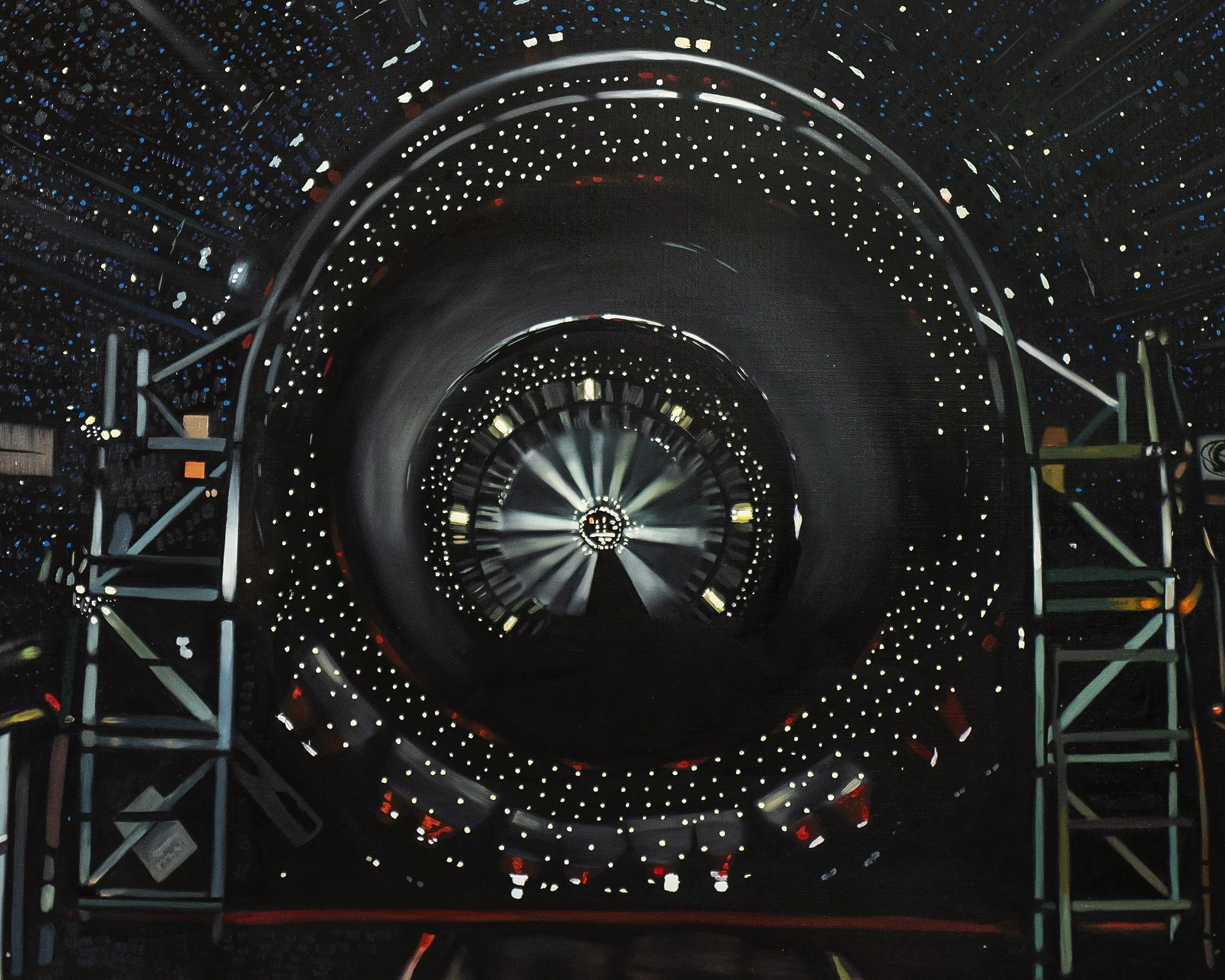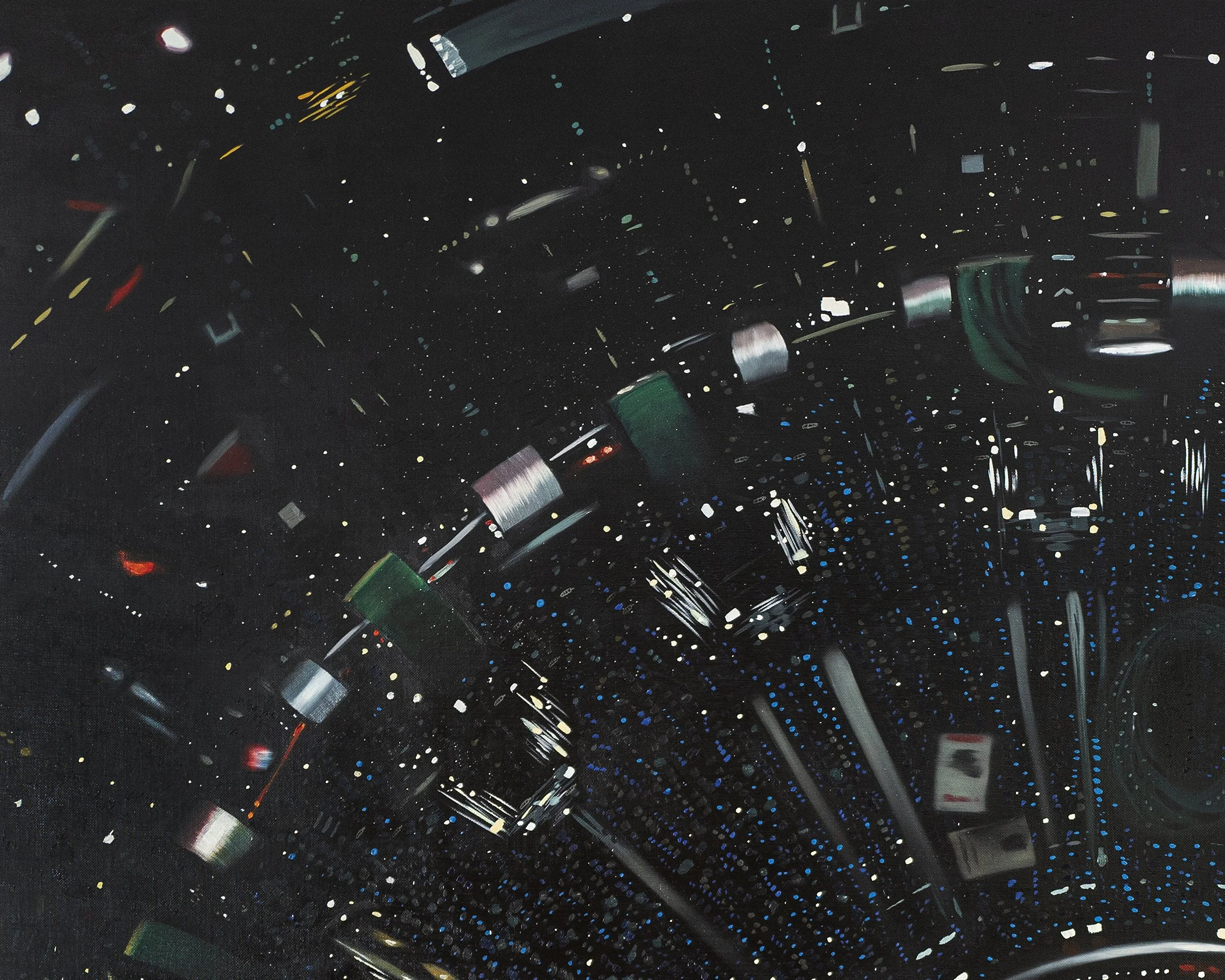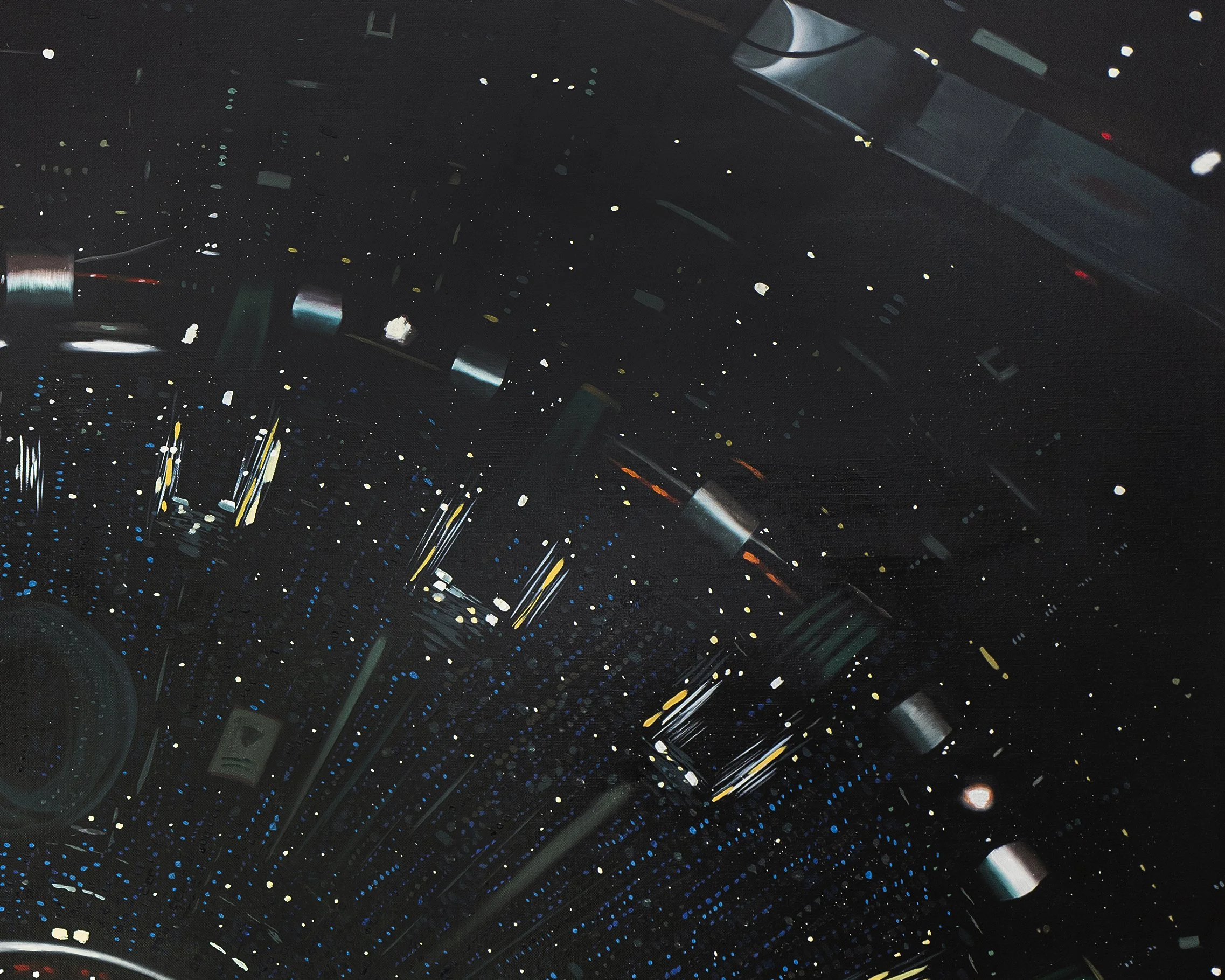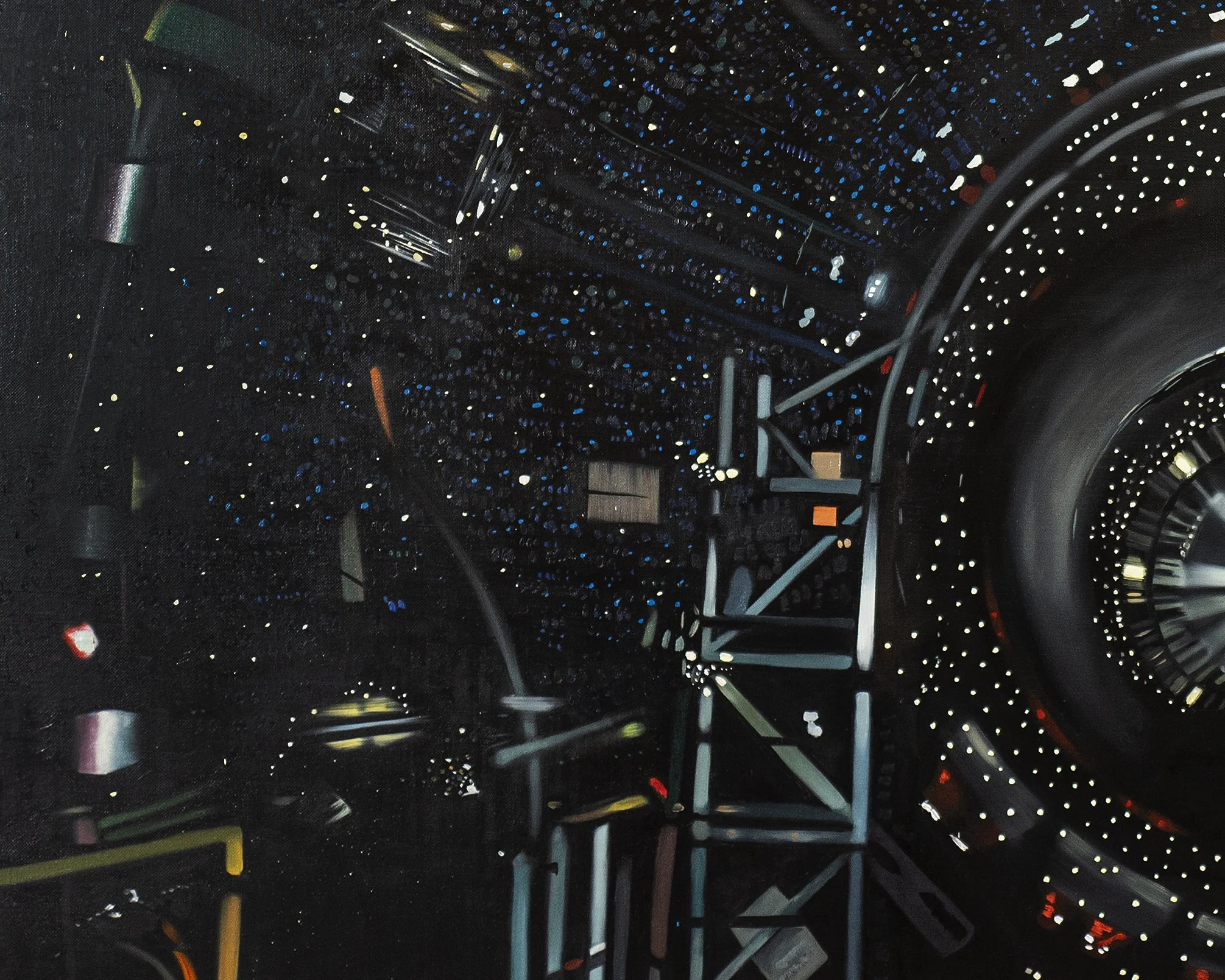Large Hadron Collider, 2023
Large Hadron Collider, 2023
Oil on linen
153 × 183 cm (60 × 72 in)
Large Hadron Collider (2023) is a profound artistic exploration of humanity’s insatiable curiosity and its relentless pursuit of the fundamental truths of existence. This colossal machine, with its intricate network of tunnels and detectors, transcends its function, embodying an aesthetic grandeur that bridges the realms of science and engineering. It stands as a testament to human ingenuity and unprecedented collaborative effort. Within its mechanical magnificence lies a deeper significance: the Collider’s quest to uncover the smallest fragments of reality—the fundamental particles that constitute the very fabric of our universe. It is a paradox, a symbol of both complexity and simplicity, designed to unravel the deepest mysteries of existence and reveal the foundational elements of all that is. In Tan Mu’s vision, the Collider is more than an engineering marvel; it is a metaphor for humanity’s ceaseless search for meaning—a journey to “find the god,” to confront the unanswerable, and to seek eternity within the structure of the cosmos. By capturing the Collider’s aesthetic grandeur and intricate design, Large Hadron Collide invites viewers to contemplate the vastness of the universe and the boundless potential of human endeavor.
Frieze London, Installation View, October 11 – 15, 2023, The Regent's Park, London, Photographed by: Andrea Rossetti
Q: Your work Large Hadron Collider (2023) is themed around the Large Hadron Collider (LHC). Can you discuss the inspiration behind this piece?
Tan Mu: The inspiration for this piece comes from the Large Hadron Collider (LHC), which stands as a pinnacle of modern technology and physics, used to explore the fundamental particles of the universe and even attempt to trace the origins of the cosmos. Scientists use this massive device to search for the “basic building blocks of creation,” which reminded me of how art has always tried to depict similar themes—whether in religious depictions of the creation of the world or in the pursuit of eternity and truth. I see the LHC as a modern "altar" or "ritual" in humanity's quest to answer ancient questions: Where did the world come from? What are dark matter and the Higgs boson? These explorations resonate deeply with art’s ongoing search for truth.
Q: How do you convey the complexity and energy of the Large Hadron Collider in your work?
Tan Mu: The Large Hadron Collider is an incredibly complex device—both vast and intricate, calm yet full of energy. In creating this work, I aimed to capture this complexity through visual language. The black background and fine lines in the painting represent the structure of the collider, while dynamic brushstrokes and color suggest the immense energy released during particle collisions. The contrast between "motion and stillness"—the colossal device versus the collision of microscopic particles—is something I particularly focused on in this piece. I want the viewer to feel the tension between technology and nature, the macro and micro scales.
Q: You mentioned that the Large Hadron Collider is a form of “collective labor.” Could you elaborate on this?
Tan Mu: The construction and operation of the Large Hadron Collider is the result of thousands of scientists, engineers, and technicians working together. This collective collaboration not only represents humanity’s dedication to scientific exploration but also reflects our curiosity about the mysteries of the universe. In my work, I try to convey this spirit of collective effort. The collider is not just a scientific instrument; it symbolizes human intellect and collaboration. This "collectivity" is deeply moving to me because it shows how humanity, through cooperation, explores seemingly unreachable truths.
Q: The creation of this work took a long time. Could you talk about your experience during the creative process?
Tan Mu: The creation of this piece was indeed a lengthy process. I remember spending six hours on the first two days, followed by many more hours gradually adding details. This extended creative process allowed me to reflect deeply on the significance of the LHC and how it connects science and art, the macro and micro. As I worked, I continually adjusted the details, trying to capture both the structural beauty of the collider and the sense of energy it conveys. This meticulous work was deeply immersive, helping me understand both the complexity of scientific exploration and the depth of artistic expression.
Q: Where does this work fit into your overall body of work?
Tan Mu: This piece represents a further exploration of themes related to science, the universe, and temporality. It connects intrinsically with my other works, such as Moldavite and Powehi. Whether depicting meteorites, black holes, or the Large Hadron Collider, I am attempting to use painting to document objects and phenomena that transcend time and space. These works collectively form my ongoing exploration of the universe, science, and human existence, while also reflecting my multidimensional contemplation of time and space. Large Hadron Collider is not only a tribute to modern science but also an attempt to blend art and science.







